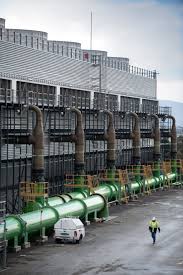

Hydro Tasmania has announced that it will re-assemble and restart its Tamar Valley gas-fired generators for the first time in 18 months in response to the driest spring in the state ever recorded.
It says that restarting the Tamar Valley gas generators, which operate as a combined cycle gas turbine (broadly equivalent to base load rather than peaking) makes “good commercial sense”. Presumably because it allows the limited hydro to be conserved for higher pricing peaking events.
The fall in hydro reservoirs is not just a problem in Tasmania. Earlier this year, Snowy Hydro decided to pay $234 million for the Colongra gas-fired power plant in NSW.
Even though the plant had only operated for a total of 300 hours in 5 years, and rising gas prices basically priced it out of the market, Snowy Hydro bought the gas peaking plant as an insurance against the risk of declining water levels. Its gas plants in Victoria performed a similar role in the last drought in that state.
Brazil, which relies on hydro for between 70 and 80 per cent of its power, had to resort to gas plants in 2014 and this year when record droughts lowered the hydro reserves to just 5 per cent of their capacity in some areas, leading to blackouts in cities such as Sao Paulo and Rio de Janeiro.
Tasmania has long term plans to duplicate the Basslink connection to Victoria so that it can provide “base load” clean energy to the mainland. It has estimated it could supply up to 1,000MW of such capacity.
Hydro Tasmania says it expects Tamar Valley to be back on line early in 2016, after temporary staff reassemble some of the units put in “dry storage.”
“We have concluded that it is economically sensible to run the CCGT for a period in the New Year,” the company said in a statement. But it said it had not changed its view that the gas plant was neither economically viable in the long term, or required for energy security. The company still intends to sell the turbines.
“Most of the commercial arrangements were previously contracted, so have remained in place while the unit has been in dry lay-up. The incremental cost of running the unit over summer compares favourably to other supply options.”
Hydro Tasmania restated its assurance that there is more than enough energy to meet Tasmanian demand despite the record dry of the past few months.
“Even if we experience a continuation of below average inflows to hydro storages through until next winter, there is enough energy to meet Tasmanian demand,” said Mr Flack.
“In addition to water currently in storage, there will be future inflows, wind generation and the import capacity of Basslink. While the CCGT remains on site, it provides an economically sensible addition to the energy supply mix.”
The gas market on the east coast has directly contributed to the cost-of-living crisis. It…
Safety regulator closes small Victoria solar farm after inverter fire while it investigates cause and…
Labor promises $500 million to ensure locally made steel and aluminium are used in wind…
APA says Pilbara wind, solar and battery plans depend on customers, but its main focus…
Oliver Hill, from Race to 2030, on the new roadmap for turning electric cars into…
Construction begins on a big battery project next to the largest solar farm in Australia.